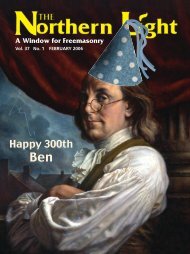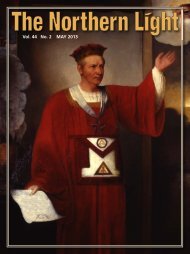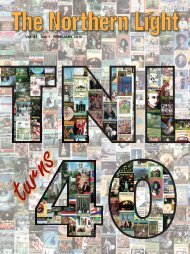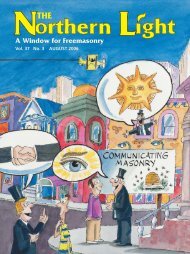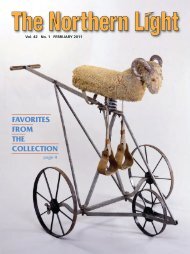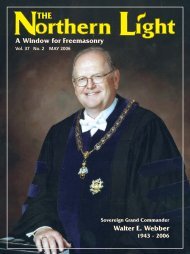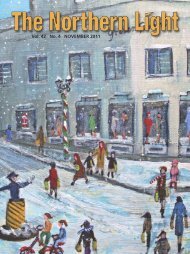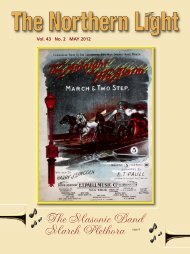The Degree Rituals The Supreme Council, 33 ... - Scottish Rite, NMJ
The Degree Rituals The Supreme Council, 33 ... - Scottish Rite, NMJ
The Degree Rituals The Supreme Council, 33 ... - Scottish Rite, NMJ
Create successful ePaper yourself
Turn your PDF publications into a flip-book with our unique Google optimized e-Paper software.
<strong>The</strong> <strong>Degree</strong> <strong>Rituals</strong><br />
pelican, the cubic stone, the three pillars of faith, hope, and charity, the mystic<br />
letters “I.N.R.I.”, and use of Jesus of Nazareth as the exemplar. Where the<br />
Francken ritual differed most radically from the modern ritual was in the stipulation<br />
that only Christians could be admitted to the degree.<br />
<strong>The</strong> 18° ritual approved by the <strong>Supreme</strong> <strong>Council</strong> in 1870 reinforced and<br />
perpetuated the original Christian emphasis of the degree. This circumstance<br />
was not without its critics, however. For one, Albert Pike, Sovereign Grand<br />
Commander of the Southern Jurisdiction and a renowned Masonic ritualist in<br />
his own right, objected to the 18° ritual of the Northern Masonic Jurisdiction<br />
as a “strictly Christian degree.” <strong>The</strong> rebuttal to Pike was that he was an innovator,<br />
who had changed the ritual of the 18° to transform what always had<br />
been a Christian degree into a universal degree.<br />
<strong>The</strong> issue never was completely resolved, as some voices continued to advocate<br />
a ritual with a more universal message, that is to say, acceptable to all<br />
monotheistic faiths. This point of view finally gained concessions in the ritual<br />
of 1942, further refined in 1964, which made widespread changes to rephrase<br />
or delete overtly Christian dialogue and included a new prologue that emphasized<br />
the universal character of the degree. However, as it does to this<br />
day, the ritual retained Christian symbols, the beatitudes, “<strong>The</strong> Story of the<br />
Cross,” the mystic letters, and Jesus of Nazareth as the exemplar of the degree.<br />
Another refinement toward a more universal ritual was made in 1987,<br />
when the name “Jesus” replaced “Christ” in the prologue.<br />
In 1990-91, and again in 2007, the Committee on Ritualistic Matters expressed<br />
concern that the universalist philosophy of <strong>Scottish</strong> <strong>Rite</strong> Masonry<br />
was being compromised by local Valleys embellishing presentations of the<br />
18° with non-ritualistic, unauthorized Christian sermons, prayers, and hymns.<br />
As to the ritual itself, however, the 18° remains in equipoise between traditionalists<br />
and universalists. In effect, it has retained its Christian character<br />
but has been purged of theology and dogma.<br />
Aside from issues of Masonic philosophy, the ritual of the 18° has been<br />
impacted by the redefining changes made in the 17°. As previously explained,<br />
the 17° Ritual of 1957, based on the Book of Revelation, had been presented<br />
in conjunction with and as a prelude to the 18°. <strong>The</strong> decision to withdraw<br />
that ritual in 1994 prompted a revision of the 18° ritual to incorporate introductory<br />
material formerly communicated as part of the 17°. This resulted in<br />
45




